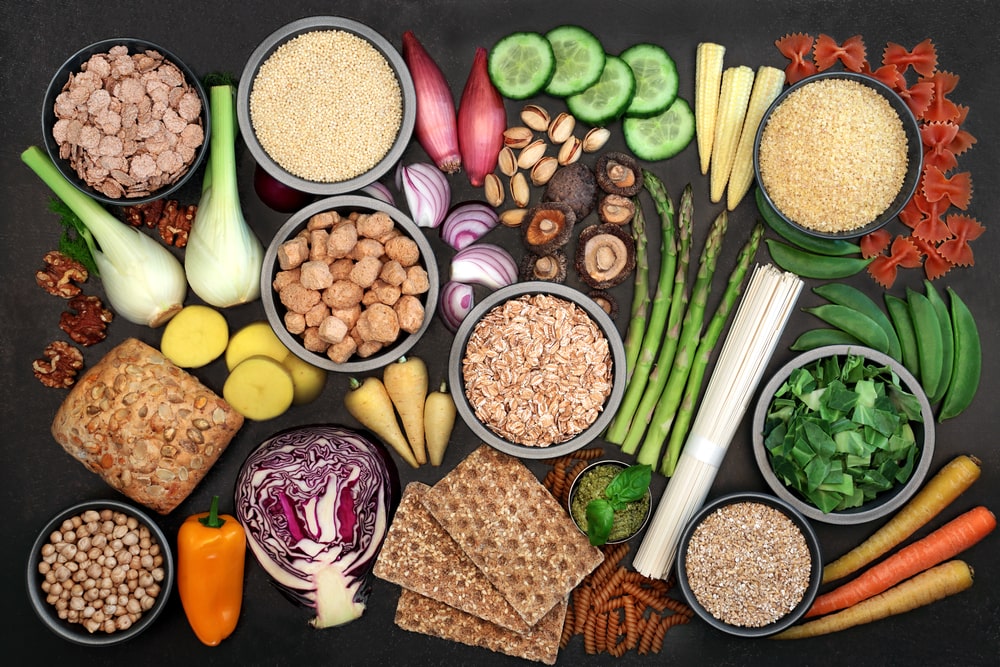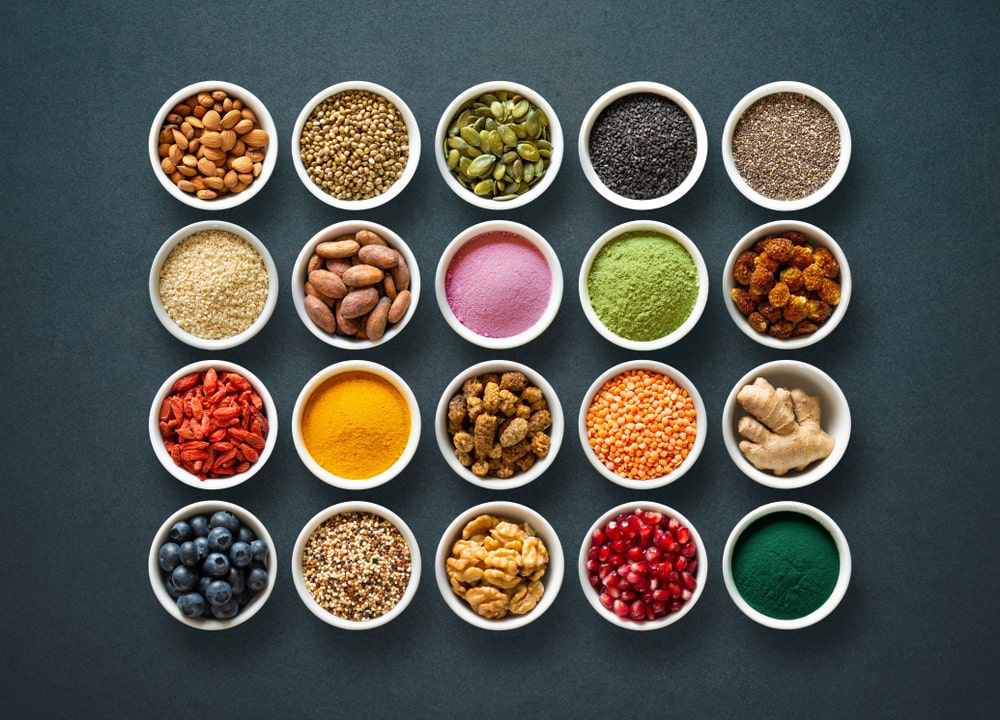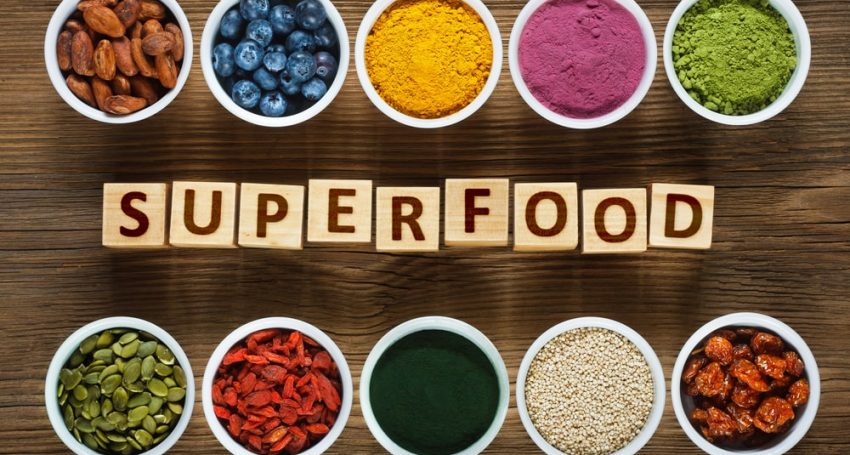It is difficult to imagine the diet of a modern person without chia seeds, goji berries, avocado, turmeric latte or matcha tea. But are superfoods really as good as fitness bloggers tell us? Is it possible to do without newfangled products and be healthy? We’ll sort it out together!
What are superfoods?
Superfoods are products with a high concentration of nutrients, vitamins, minerals, antioxidants and fibre, which have a positive effect on health and well-being. In recent times, this term is constantly found in glossy magazines and across the Internet. We are assured that superfoods are needed not only for our body, but also for perfect skin and shiny hair.
Why are superfoods so popular?
What do you have for breakfast – buckwheat with milk (cow’s milk has long been displaced by plant-based milk on supermarket shelves) or a bowl of edamame beans, chickpeas and avocado seeds? The answer seems to be obvious. And what drink do you prefer? It is unlikely that it will be black/green tea or even coffee. Today matcha confidently leads. Ever so imperceptibly, our eating habits have changed dramatically. The cult of a healthy lifestyle makes us follow our diet and, at least occasionally, attend a fitness club. But you must admit, it’s much easier to buy acai berries than it is to eat healthily on a regular basis. Those who are not yet ready to eat portions of vegetables daily, reduce the amount of red meat, refuse coffee and alcohol, are happy to buy what is associated with health in the modern world – and put a tick in the box marked “Healthy”.

It is worth recognizing that the world has changed, and our thinking is more like a video clip – more pictures, less text, more information, less logical connections. More and more people are photographing their food – especially from new restaurants or exotic places. The picture must be beautiful and aesthetic – and to understand this, you do not even need to be a blogger. And of course, it is almost impossible to take a good photograph of beef stroganoff using a smartphone. But a photo of a bowl of something healthy will turn out perfectly for anyone who knows how to hold a phone. Dishes should be photogenic, of course, and superfoods achieve it with style.
The world moves at a tremendous speed. To keep up with it, we need to be flexible, open-minded and grab everything new on the fly. Food is a simple and affordable way to be at peace with yourself. Not everyone is ready to quit work and begin to master a radically new skill, but most people can afford to try an exotic fruit or a new dish they’ve not eaten before. Skilful PR is at work here – and now instead of the usual apples or tangerines, you buy feijoa or dragon fruit.
You are what you eat
As the cult of food prevails in the 21st century, a lot of specialists have appeared – nutritionists, food bloggers and even food stylists (those who beautifully arrange dishes for a photographer). It is not surprising, therefore, that we give food our close attention. Of course, we follow fitness and lifestyle bloggers, a detox guru – involuntarily copying not only their lifestyle, but also what is on their plate.
We must say “thank you” to celebrities for introducing superfoods to the masses. Madonna, Gwyneth Paltrow, Gisele Bündchen and many other A-list stars are happy to share their superfood recipes.
In addition, society is more tolerant than ever of people with specific food requirements and intolerances – whether they are vegetarians, vegans, pescetarians, raw foodists, or those who must have gluten or sugar-free diets. Food has become, if not a religion, then a kind of cult. Therefore, if you go to visit someone and tell them about your food allergies, no one will look at you oddly – rather, they might even look at you with respect. You can ask for any drink made with coconut or soy milk, replace sugar with agave syrup or Jerusalem artichoke, and generously use turmeric instead of salt. Now, such requests are not only catered for in restaurants or cafes, but also in the kitchens of ordinary people. By the way, it is possible that vegans, whose diet is substantially narrower, have set the trend for superfoods. Rejecting most products, they wanted at least somewhere – in the berries of ancient tribes, coconut water or spirulina – a full range of nutrients they might otherwise miss.
Thanks to globalization and advanced logistics, we have access to just about every superfood sometimes forgetting that the analogue of Peruvian poppies can be found in our own country. In addition, Peruvians for many centuries have consumed poppy seeds, and developed a genetic predisposition to this product. Will the European human body be as susceptible to these nutrients as well?

Are superfoods as useful as we are told?
First of all, it should be borne in mind that the term “superfoods” does not feature in medical terminology. Consider the avocado. It is, of course, a healthy product that contains beneficial fats, fibre, and potassium. At the same time, it is important to remember that even with all its benefits, avocado is just one of many useful products – but no more than that.
We owe “superfoodomania” to marketers who came up with fascinating stories about superfoods, which contain almost the entire periodic table. At the same time, there are simply no authoritative scientific studies proving the high nutritional benefits of quinoa, chia seeds, vitgrass, etc. In addition, most experiments are only carried out on rodents.
The superfoods that we are talking about didn’t appear just yesterday, but have been with us for centuries. So, why is it that we are so fond of quinoa, acai berries and fermented foods right now? The answer is clear – effective marketing and PR. It is unlikely that buckwheat can make the same profit as buckwheat tea. By the way, this is what is written on the packaging of the now popular tea: “Buckwheat tea drink contains a wide selection of vitamins and minerals: magnesium, iron, vitamins B1 and B2. From time immemorial, tartary buckwheat is famous for its useful properties, such as: quick recovery of energy and cleansing the body of accumulated toxins, as well as the prevention of high blood pressure and chronic fatigue syndrome. It helps to remove excess fluid from the body and improves sleep.”
Would you buy this tea if not for such clever marketing tricks? And can one tea bag really relieve emotional burnout, help with insomnia and contribute to detox (and all this, it should be noted, is from the same bag)? This is a question you should ask yourself. And some advice that is always relevant: be critical of advertisements and bright packaging; look at the ingredients, and not at the cleverly written claims that encourage you to buy.
It is no coincidence that the governments of many countries have begun to regulate this issue. So as to not mislead the public, manufacturers must provide official documentation supporting any health claims if they want to use the word “superfood” on the packaging.
In addition, superfoods are often brought from other countries and continents. Will they still be useful after transportation? The question remains debatable. Fortunately, consumers are becoming more conscious about buying local products. If you picked blueberries yourself or bought them in the winter from a supermarket that shipped them from somewhere in Latin America, do not forget that the amino acid content of the imported berries will be different.
Perhaps superfoods have replaced vitamin and dietary supplements. At least they are completely natural and taste good. Now kombucha can be found in any healthy lifestyle cafe, yet in the past our grandmothers produced it at home.
Those of us who regularly consume superfoods and believe we feel better for it are quite possibly dealing with the placebo effect. However, if you like the superfoods you eat and are seeing positive results, there is no point in stopping using them, of course.

Important points to remember
To conclude, it is of course important to have a balanced diet and maintain good health. Nobody is forbidding you to buy new products in the supermarket and try something interesting. But do not think that superfoods will give you longevity or immortality. You should not be under the illusion that one product can replace all the micro and macro elements our bodies needs. Any recommendations from WHO or other reputable sources always begin with the idea that nutrition should be balanced and varied. Can new-fangled products make you healthier, prettier and younger? If you generally lead a healthy lifestyle, then superfoods can add extra energy and vitality. However, they are absolutely not a panacea. Therefore, if you prefer the foods familiar from your childhood – the same buckwheat that we mentioned, rose hips, cranberries, pine nuts and sea buckthorn – you can use Russian superfoods and not chase fashion. These will provide no less benefits than those exotic superfoods imported from overseas.



